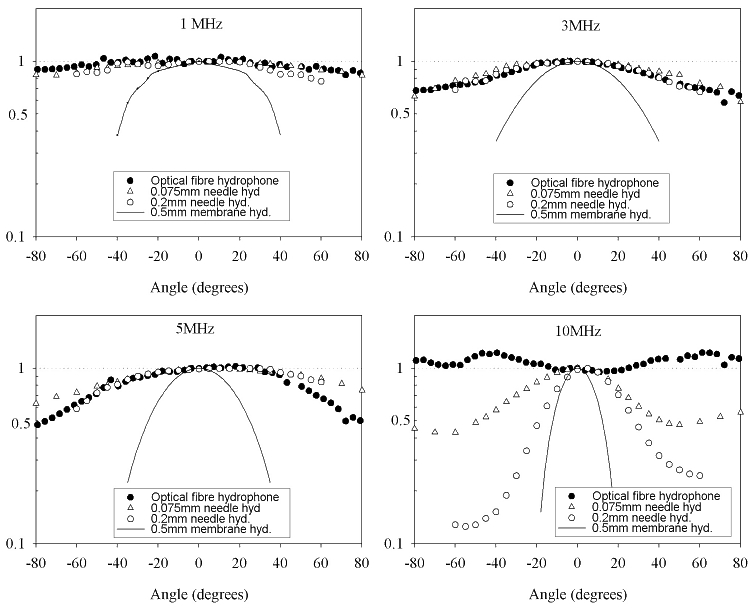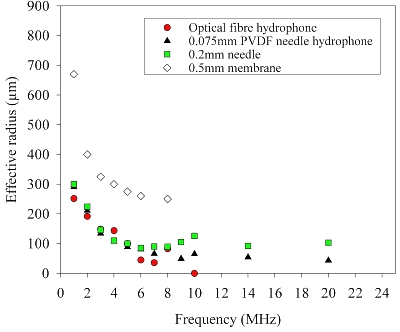|
MLE homepage | Research
| Medical
Physics | UCL Overview | Guide to Fabry-Perot ultrasound detection | Optical fibre hydrophone | 2D optical ultrasound array | Photoacoustic-photothermal probe | References | Contact |
|
Sensitivity | Linearity | Frequency response | Directivity | Stability | Temperature sensitivity Directivity
Figure 7 Comparison
of directional response at 1,3,5 and 10MHz with PVDF needle and membrane
hydrophones [4]
|
| Back to top |

 Figure
8 Comparison of effective radii as a function of frequency. All
devices show the effective radii initially falling off with increasing
frequency, leveling out to a value close to the physical radius of the
active element - such behaviour is characteristic of circular receiver
whose sensitive region does not fall sharply to zero at the perimeter.
For the PVDF membrane hydrophones this may be due to a gradual decrease
in piezoelectric sensitivity around the edges of the spot poled
sensitive region. For the needle hydrophones such apodisation may occur
due to variations in the thickness and flatness of the PVDF element near
the perimeter and for the optical fibre hydrophones as a result of the
Gaussian profile of the illuminating beam. [4]
Figure
8 Comparison of effective radii as a function of frequency. All
devices show the effective radii initially falling off with increasing
frequency, leveling out to a value close to the physical radius of the
active element - such behaviour is characteristic of circular receiver
whose sensitive region does not fall sharply to zero at the perimeter.
For the PVDF membrane hydrophones this may be due to a gradual decrease
in piezoelectric sensitivity around the edges of the spot poled
sensitive region. For the needle hydrophones such apodisation may occur
due to variations in the thickness and flatness of the PVDF element near
the perimeter and for the optical fibre hydrophones as a result of the
Gaussian profile of the illuminating beam. [4]